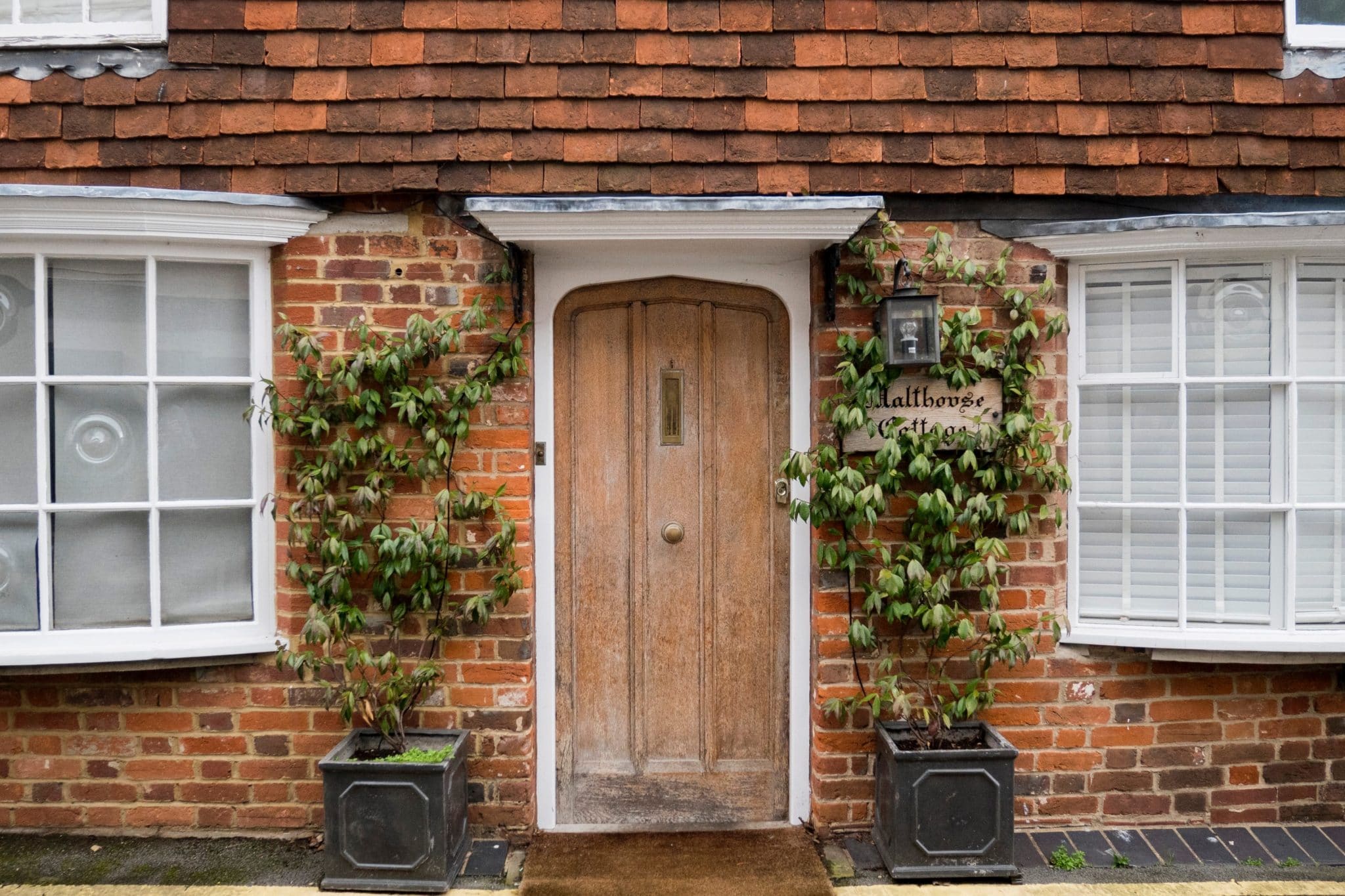Preliminary Buyer Walkthroughs: What You Need to Know
Last Updated November 9, 2023

While mortgage rates sit at historic lows, not all bodes well for house hunters. Potential buyers nationwide face low housing inventory and subsequently high prices, leaving many to wonder how they’ll ever secure their dream homes. And, eager to avoid bidding wars with other hopefuls, buyers’ real estate agents suggest that their clients pursue an unconventional time and money-saver: preliminary buyer walkthroughs.
Also known as consultation inspections, buyer consultations, or walk-and-talk inspections, preliminary buyer walkthroughs are not home inspections. Rather, they are 30-minute meetings in which an inspector traverses the property with the potential buyers and calls out visible potential defects with a cursory glance. Since inspectors typically do not provide a report, and there isn’t enough time to provide a thorough evaluation, consumers who opt for preliminary buyer walkthroughs must rely on the information the inspector is able to verbally relay during the consultation. By getting a walkthrough instead of a home inspection, potential buyers hope to make offers non-contingent on an inspection that will win them the deal.
But are preliminary buyer walkthroughs good for consumers? How about for inspectors? And what liability do home inspectors assume when they act as consultants? In this article, we aim to answer these questions.
Walkthroughs and Consumers
Most home inspectors agree that preliminary buyer walkthroughs are not in consumers’ best interests—particularly when they replace home inspections.
Dave Taurinskas, Owner of Reassurance Home Inspection in Minnesota, is an ardent advocate for ceasing consultations nationwide. Taurinskas has spoken to independent arbitrators, real estate agents, and recent home buyers regarding the disadvantages of walk-and-talks. His argument: Many potential home buyers believe that a walkthrough will warn them of any defects that plague the property when it is unlikely that an inspector will be able to discover and disclose many significant defects in such a short survey. As a result, consumers may unknowingly purchase houses with major deficiencies, only to discover them after moving in, which may increase your risk.
“A walkthrough consultation is not a home inspection, and it is not a substitute for a home inspection,” said Bruce Barker, 2021 President of the American Society of Home Inspectors (ASHI) and Owner of Dream Home Consultants, LLC in North Carolina. “Home buyers should understand that, when they waive the home inspection, they assume the risk of incurring significant costs to repair defects that might have been discovered during a home inspection.”
Dave Klutch of Harmony Home Inspections, Inc. in Minnesota agrees, stating that preliminary buyer walkthroughs are “watered-down inspection[s]” that serve realtors—not buyers.
Consultations and Inspectors
Many of the home inspectors who perform walk-and-talk inspections do so to maintain relationships with agents. If they were to turn down a consultation, they fear their referring agents might give the job and future inspections to someone else.
However, not all real estate agents view walkthroughs the same way. In fact, Taurinskas knows a realtor who stopped using a home inspector because they did perform a consultation for a client instead of a home inspection. So, depending on the realtor and your relationship, it can work both ways.
Furthermore, some home inspectors have concerns over whether buyer consultations damage the inspection industry at large. Since there is no state or association standard of practice that officially establishes the scope and limitation of the service, and because the findings are so limited, some inspectors suggest that consultation inspections devalue the inspection profession.
“[Preliminary buyer walkthroughs] desecrate our industry that we spent so much time developing over decades to be a respected part of the real estate process,” Taurinskas said.
Taurinskas encourages his fellow home inspectors to contact realtor associations in their areas to impede walk-and-talks on a larger scale. By involving the people who write and revise policies, Taurinskas argues, home inspectors are more likely to create lasting and meaningful change.
 Offering Alternatives
Offering Alternatives
For inspectors unwilling to or uninterested in performing walk-and-talk inspections, there are alternatives. Klutch’s solution for agents and consumers pressed for time: pre-listing inspections.
Pre-listing inspections are full home inspections that inspectors perform for sellers prior to listing properties for sale. By getting an inspection before potential buyers see the house, sellers hope to fix or disclose defects ahead of time, increasing the likelihood of a faster, more profitable sale.
“[Sellers] can throw [the pre-listing inspection report] on [their] dining room table,” Klutch said. “It shows full disclosure. It reduces realtors haggling over price. Everyone wins.”
A word of caution: Pre-listing inspections may be dangerous to inspectors. If you perform a pre-listing inspection and know (or reasonably believe) a third party—like potential home buyers—may rely on your findings, you may have a legal duty to that third-party. To circumvent liability, talk to your insurance company and attorney about protections available in your pre-inspection agreement. For example, our claims team recommends including a sole use provision in your agreement and on the cover of your report.
Alternatively, Taurinskas recommends that buyers offer a small amount of earnest money, like $1,000, and get a full inspection with the promise to not make any demands based on findings. Should the property fare well, buyers can move forward with the purchase. Should the inspection discover excessive defects, they lose the $1,000 and the inspection fee but get to walk away.
“Why would a seller balk at having a full inspection if no demands are going to be made from that inspection?” Taurinskas said. “[The potential buyers] don’t have to give a reason to back out of the house, [so they don’t have to give an additional disclosure statement]…. [Instead,] the seller gets to keep the $1,000…and put the house back on the market.”
Limiting Liability
At the time of publication, both ASHI and InspectorPro Insurance neither endorsed nor discouraged preliminary buyer walkthroughs. Based on InspectorPro’s claims data, it appears that such consultations do not present a significant risk to inspectors. However, there are things you should do should you choose to perform preliminary buyer walkthroughs that would limit your liability.
1. Determine if there are regulations in your state.
While ASHI and InspectorPro remain neutral regarding walkthrough consultations, your state might have a stronger opinion. Before setting out to perform preliminary walkthroughs, verify whether there are any applicable state regulations.
2. Obtain a signed agreement.
To qualify for insurance coverage, you need an agreement signed prior to entering the property. However, your contract for preliminary buyer walkthroughs should be different than your standard pre-inspection agreement. This contract should explain the limited scope of your consultation. It should also underscore that it isn’t a home inspection, so it’s not in compliance with any state or association standards of practice.
Unlike a full home inspection, it may be appropriate to have one agreement for multiple consultations should the consultations be on the same day and for the same client. If you perform walk-and-talks for multiple clients or over multiple days, you must have separate agreements.
Unsure of how to draft an agreement for your preliminary buyer walkthroughs? In addition to consulting a local attorney, review your insurance policy’s requirements for inspection contracts. Also, ask your broker if your insurance provider has any sample agreements for preliminary buyer walkthroughs available.
3. Do not provide a written report.
When performing a preliminary buyer consultation, never provide a written report. Doing so could give the impression that your clients should rely on the walkthrough as they would an inspection. By sticking to just your verbal comments, you limit the risk of consumers conflating walkthroughs with true home inspections.
4. Recommend a full inspection.
In your consultation’s agreement—and at every other opportunity—recommend that your client have a full home inspection performed. Recommending an inspection does three things:
- First, it reminds consumers that consultations are not home inspections.
- Second, it protects potential home buyers from purchasing homes with devastating defects that aren’t possible to uncover during a walkthrough.
- Third, it safeguards your business should a consultation client try to claim that you are responsible for issues they uncovered at the property based on your limited walkthrough.
“I would be reluctant to perform a walkthrough consultation if I knew it was a substitute for a full home inspection,” Barker said. “In my opinion, for my company, it is not worth the potential of a dissatisfied client.”
Note: If you provide a full inspection after a consultation, you must obtain a separate agreement—signed prior—for both.
Educating buyers to understand the scope and value of a full home inspection protects both your clients and your business.
Conclusion
Should your business provide preliminary buyer walkthroughs? Or should it oppose them? As a home inspector, it’s up to your individual discretion. With this article behind you, we hope that your choice is a more informed one.
This article was published in the ASHI Reporter in May 2021. See how this story appears in print on pages 24-27 below.





